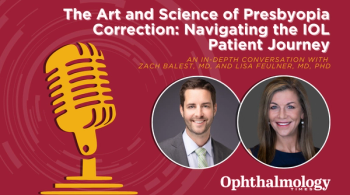
Three-dimensional spectral-domain OCT solves problem of precise spatial registration
A technique has been developed that allows acquisition of a scanning laser ophthalmoscopy-quality fundus intensity image from raw spectra measured with spectral-domain optical coherence tomography (OCT), which is the same spectra used to generate a three-dimensional OCT data set. Retinal thickness and volume maps were generated for normal eyes and those with disease.
May 3
- Fort Lauderdale, FL - A technique has been developed that allows acquisition of a scanning laser ophthalmoscopy-quality fundus intensity image from raw spectra measured with spectral-domain optical coherence tomography (OCT), which is the same spectra used to generate a three-dimensional OCT data set. Retinal thickness and volume maps were generated for normal eyes and those with disease.
"There are two problems in the application of OCT: the first, precise spatial registration, and the second, quality control in three-dimensional OCT imaging. The solution is real-time fundus imaging," Shuliang Jiao, MD, said at the annual meeting of the Association for Research in Vision and Ophthalmology.
Dr. Jiao demonstrated both normal and diseased human eyes that were imaged using this system. He also showed videos that were generated showing the exact spatial location for each OCT sectional image. Dr. Jiao is from the Bascom Palmer Eye Institute at the University of Miami.
OCT fundus intensity image uses an en face approach for spectral OCT. A two-dimensional map converted into a three-dimensional data set solves important registration problems. OCT fundus intensity images can be acquired in real time. The OCT image provides means for multi-modality image registration. High-quality fundus images can be acquired because of the capability to fine tune the images, according to Dr. Jiao.
Newsletter
Don’t miss out—get Ophthalmology Times updates on the latest clinical advancements and expert interviews, straight to your inbox.


















































.png)


